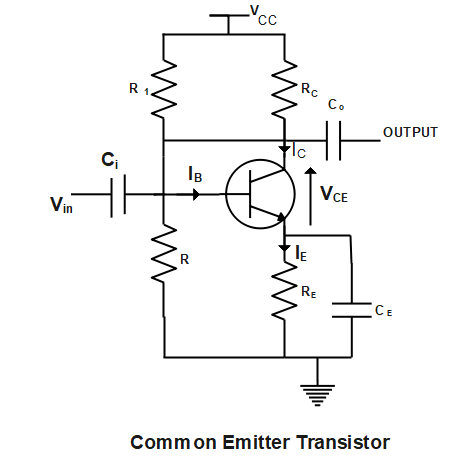
Assertion
A transistor amplifier in common emitter configuration has low input impedance
Reason
The base to emitter region is forward biased
A) If both the assertion and reason are true and reason is a true explanation of the assertion.
B) If both the assertion and reason are true but the reason is true the correct explanation of the assertion.
C) If the assertion is true but the reason is false.
D) If both the assertion and reason are false.
Answer
450.9k+ views
Hint: A transistor which is configured as common emitter, common base and common collector. Emitter is always forward biased with respect to base to supply majority charge carriers to the base. Collector terminal is always reverse biased with respect to the base to remove the charge carriers from the base collector junction.
Complete step-by-step solution:
An amplifier is a device which is used for increasing the amplitude of input signals.in an amplifier there are two input terminals for connecting input and two output terminals for connecting load. In a common emitter configuration, base is one of the input terminals and collector is one of the output terminals.

For proper functioning of a transistor, the emitter-base junction is forward biased and collector-base junction must be reverse –biased.
The input impedance of common emitter configuration with ${{V}_{CE}}$ as constant is given as:
${{Z}_{E}}=\dfrac{\Delta {{V}_{BE}}}{\Delta {{I}_{B}}}$
Where ${{V}_{BE}}$ = Voltage across base and emitter
$\Delta {{I}_{B}}$ = Base current
Base current is of order of few microamperes so the input impedance is very low
So the correct option is A.
Note: In common emitter circuits its current, voltage and power gains are quite high and the ratio of output impedance and input impedance are quite moderate. As it provides high voltage gain and moderate current gain. Common emitter circuits are well suited for voltage amplification for low frequencies.
Complete step-by-step solution:
An amplifier is a device which is used for increasing the amplitude of input signals.in an amplifier there are two input terminals for connecting input and two output terminals for connecting load. In a common emitter configuration, base is one of the input terminals and collector is one of the output terminals.

For proper functioning of a transistor, the emitter-base junction is forward biased and collector-base junction must be reverse –biased.
The input impedance of common emitter configuration with ${{V}_{CE}}$ as constant is given as:
${{Z}_{E}}=\dfrac{\Delta {{V}_{BE}}}{\Delta {{I}_{B}}}$
Where ${{V}_{BE}}$ = Voltage across base and emitter
$\Delta {{I}_{B}}$ = Base current
Base current is of order of few microamperes so the input impedance is very low
So the correct option is A.
Note: In common emitter circuits its current, voltage and power gains are quite high and the ratio of output impedance and input impedance are quite moderate. As it provides high voltage gain and moderate current gain. Common emitter circuits are well suited for voltage amplification for low frequencies.
Recently Updated Pages
Master Class 12 Biology: Engaging Questions & Answers for Success

Master Class 12 Physics: Engaging Questions & Answers for Success

Master Class 12 Economics: Engaging Questions & Answers for Success

Master Class 12 Maths: Engaging Questions & Answers for Success

Master Class 11 Economics: Engaging Questions & Answers for Success

Master Class 11 Accountancy: Engaging Questions & Answers for Success

Trending doubts
Which are the Top 10 Largest Countries of the World?

Differentiate between homogeneous and heterogeneous class 12 chemistry CBSE

Why is the cell called the structural and functional class 12 biology CBSE

Sketch the electric field lines in case of an electric class 12 physics CBSE

State and explain Coulombs law in electrostatics class 12 physics CBSE

a Tabulate the differences in the characteristics of class 12 chemistry CBSE




